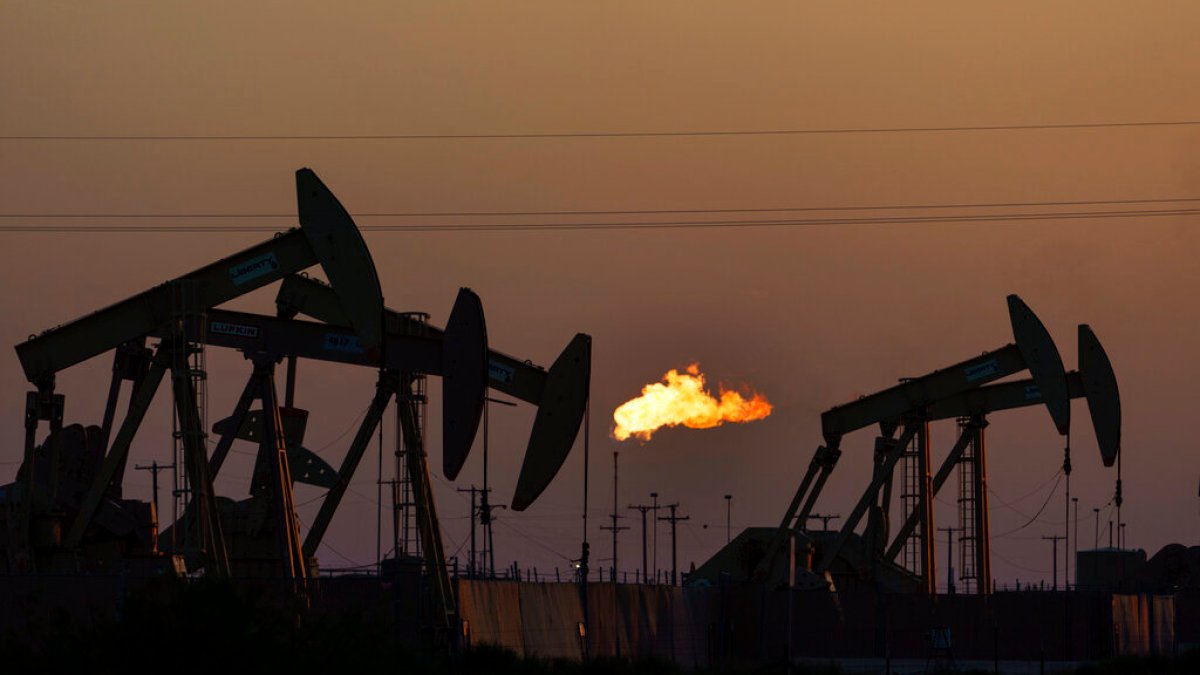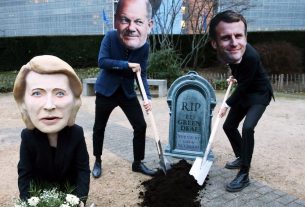Negotiators were at odds over how quickly to end free CO2 permits the EU gives industries to protect from foreign competition.
European Union negotiators have reached an agreement on overhauling the bloc’s carbon market, the central plank of its ambitions to reduce emissions and invest in climate-friendly technologies.
The deal aims to accelerate emissions cuts, phase out free allowances to industries, and target fuel emissions from the building and road transport sectors, according to a European Parliament statement.
“The agreement … will allow us to meet climate objectives within the main sectors of the economy, while making sure the most vulnerable citizens and micro-enterprises are effectively supported in the climate transition,” Czech environment minister Marian Jurecka said in a statement.
The EU Emissions Trading System (ETS) allows electricity producers and industries with high energy demands, such as steel and cement, to buy “free allowances” to cover their carbon emissions under a “polluter pays” principle.
The quotas are designed to decrease over time to encourage them to emit less and invest in greener technologies as part of the EU’s ultimate aim of achieving carbon neutrality.
Negotiators representing member states and the European Parliament spent more than 24 hours in intense talks before reaching an agreement on Saturday night that widens the scope of the EU carbon market.
The deal means emissions in the ETS sectors are to be cut by 62 percent by 2030 based on 2005 levels, up from a previous goal of 43 percent. Concerned industries must cut their emissions by that amount.
The agreement also seeks to accelerate the timetable for phasing out the free allowances, with 48.5 percent phased out by 2030 and a complete removal by 2034, a schedule at the centre of fierce debates between MEPs and member states.
The carbon market will be progressively extended to the maritime sector, intra-European flights, and waste incineration sites depending on a favourable report by the commission.
A “carbon border tax”, which imposes environmental standards on imports into the bloc based on the carbon emissions linked to their production, will offset the reduction of free allowances and allow industries to compete with more polluting non-EU rivals.
The agreement also aims to make households pay for emissions linked to fuel and gas heating from 2027, but the price will be capped until 2030.
The commission had proposed a second carbon market targeting building heating and road fuels, but the plan raised concerns as European households grapple with soaring energy prices exacerbated by Russia’s invasion of Ukraine.
If energy prices continue to spiral, the application of this part of the agreement will be delayed by a year.
Funds from this second market will go to a “Social Climate Fund” designed to help vulnerable households and businesses weather the energy price crisis.
At stake was the EU’s ability to contribute to global efforts to fight climate change, and achieve its target to cut net greenhouse gas emissions by 55 percent by 2030 compared with 1990 levels.
Meeting that goal will require the EU carbon market to be reformed to cut emissions faster, which it does by requiring about 10,000 power plants and factories to buy CO2 permits when they pollute.
Negotiators were at odds over how quickly to end the free CO2 permits the EU gives industries. Those permits will be wound down as the EU phases in a carbon border tariff designed to prevent domestic firms from being undercut by overseas competitors.



